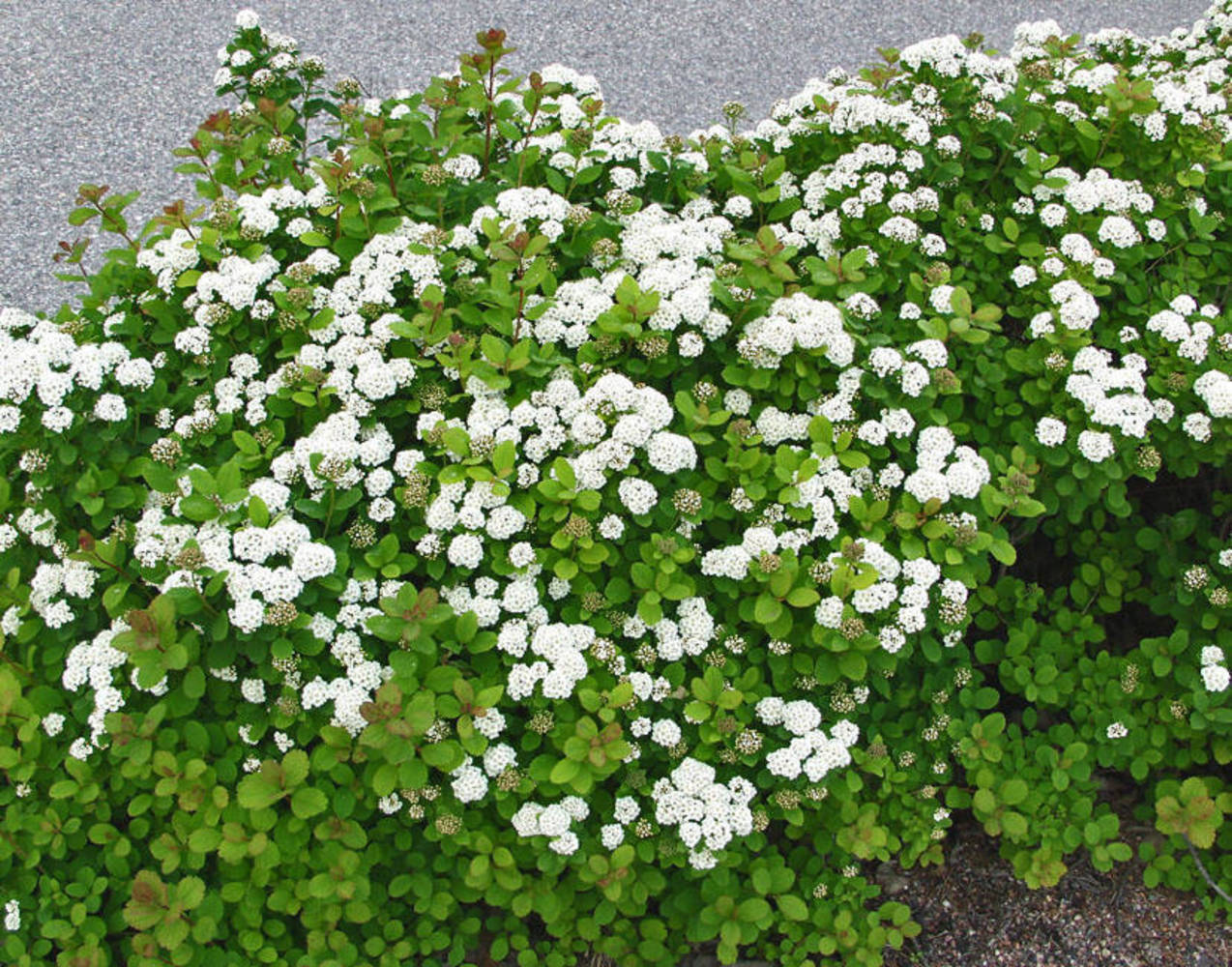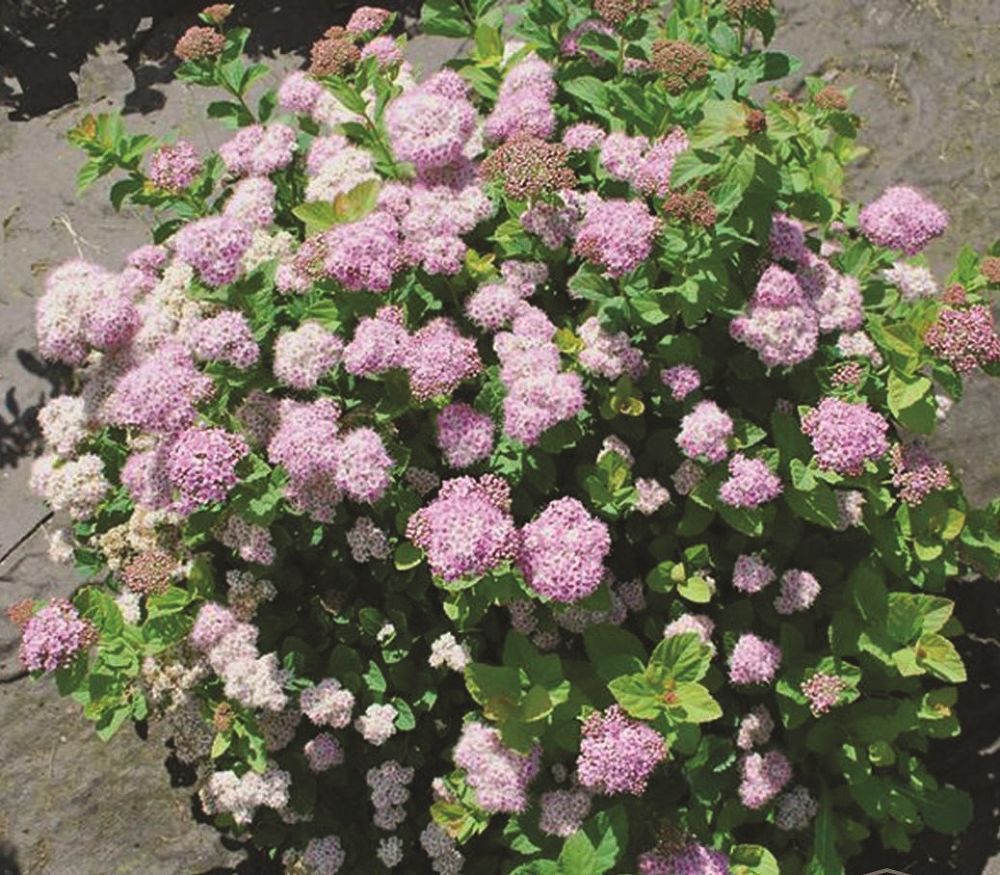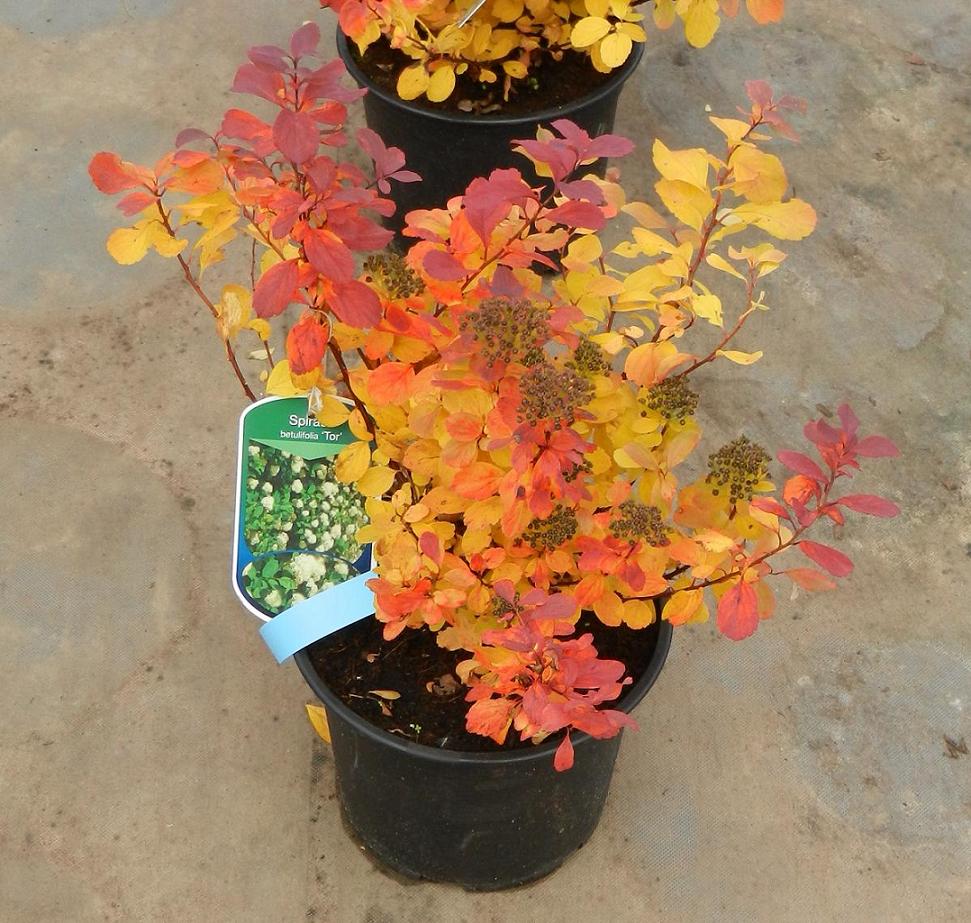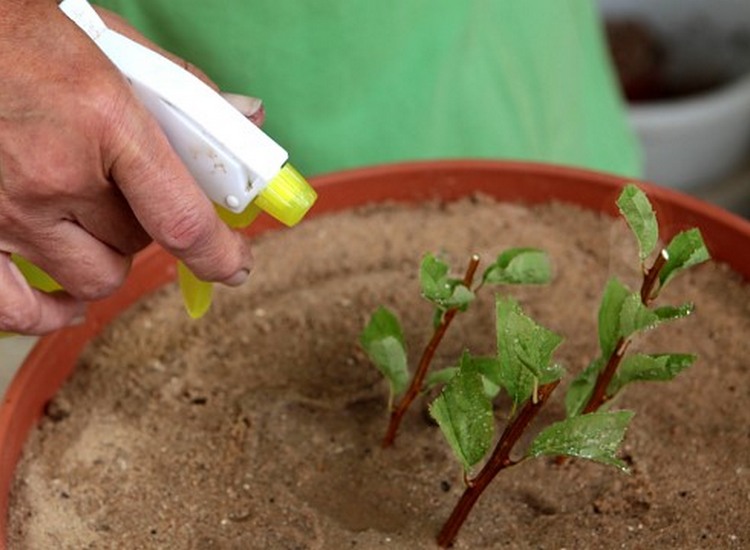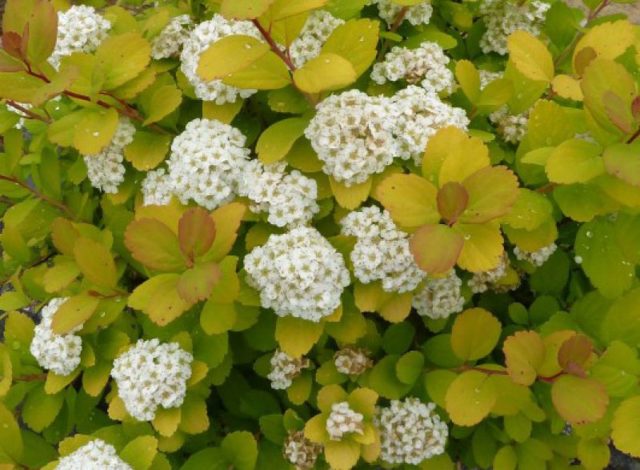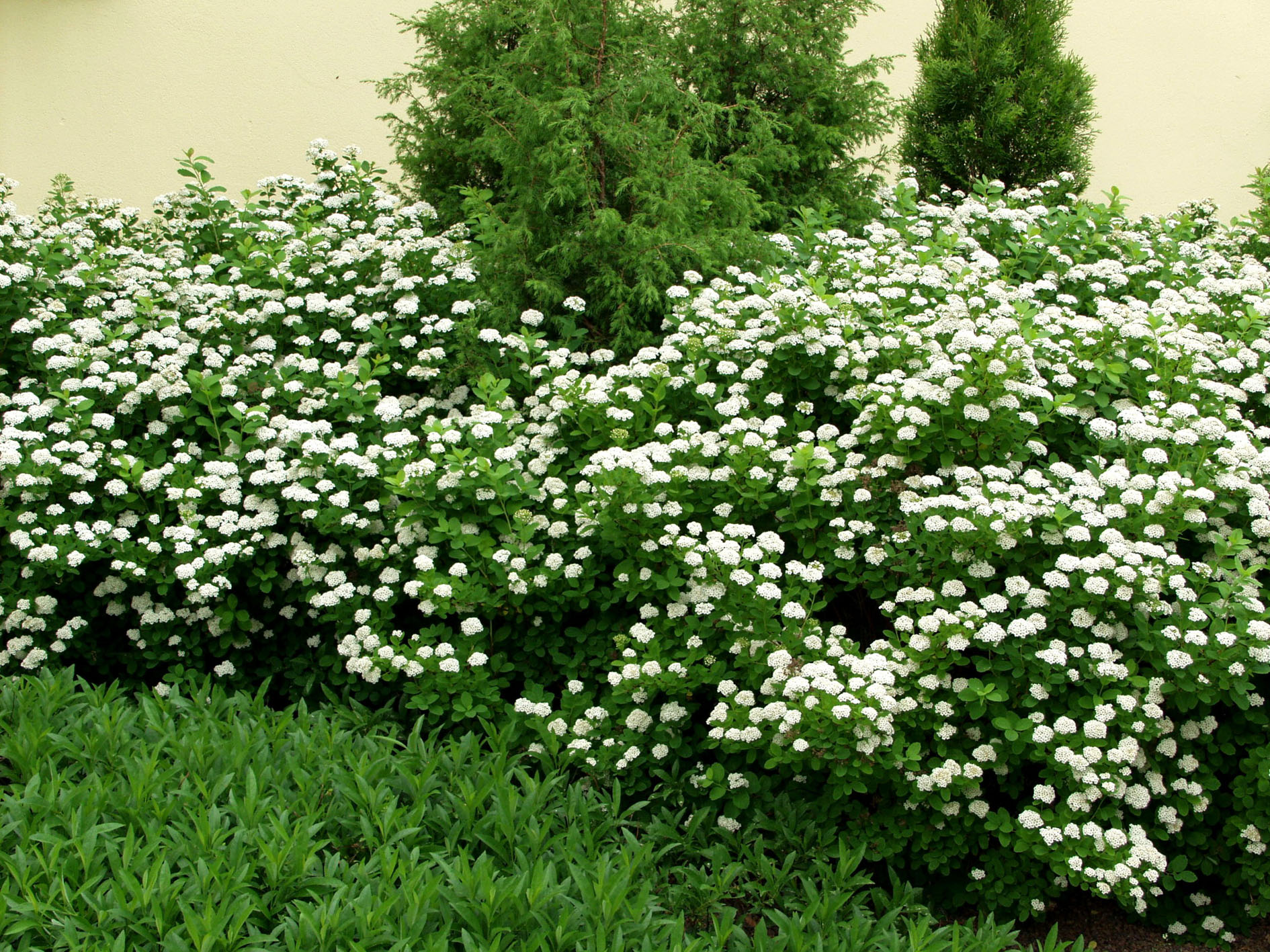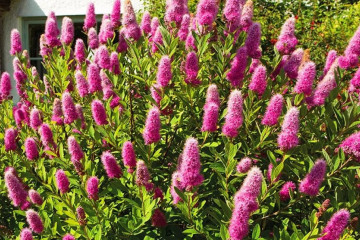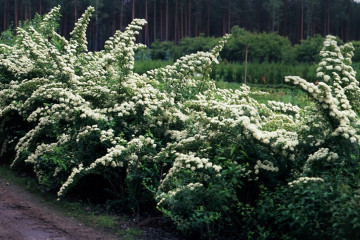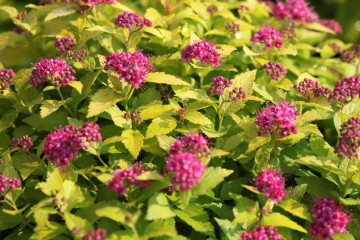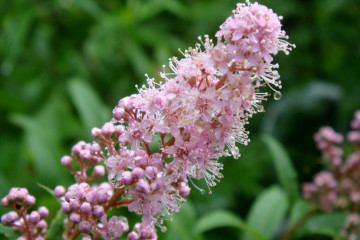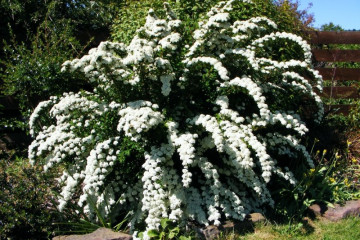Birch spirea - description, planting
Content:
The second name of birch spirea is meadowsweet. The culture is unpretentious in its care, it adapts to various conditions of detention. However, she needs the environment to which she is used to being in nature.
Description of birch spirea
Spiraea betulifolia is an ornamental shrub with a height and crown diameter of 50-100 cm. The culture received its name for its jagged leaves, similar to birch. In summer they are green, in autumn they turn yellow-gold or red.
The buds begin to bloom in early June, the flowering of the bushes lasts about a month. The petals are white. The buds are collected in corymbose inflorescences with a diameter of about 9 cm.
The most famous varieties of birch spirea:
- Spirea Thor. Spreading bushes of culture. The flowers are painted with a creamy palette. The leaves are green in summer, turn yellow with the onset of autumn. The inflorescences of Spiraea betulifolia Tor begin to bloom at the end of June.
- Thor Gold. It is a shrub 60-100 cm high. Thor Gold Spirea attracts attention with its yellow-green leaves in summer, crimson in autumn.
- Pink Sparkler. This is the only variety of birch spirea, the inflorescences of which are pink.
Meadowsweet can be planted singly, or several varieties can be combined in a mixborder. You get a mix of flowers and leaves of different colors.
Planting a plant
On the site, the spirea is planted in spring or autumn. The plot is selected sunny. It is one of the few crops that prefer acidic soil.
Planting from seeds
Seed material is stratified, disinfected before planting. The prepared seeds are planted in a greenhouse in spring. When they sprout, they are thinned out. Young bushes are planted on the site the next year.
Planting seedlings in open ground
Grown plants are planted on the site as follows:
- Dig a hole 60 cm wide and deep.
- A drainage layer is placed at the bottom, consisting of small stones or broken bricks.
- A substrate consisting of garden soil, peat, humus and sand is also poured there.
- Spirea is planted so that the root collar is not buried.
- The seedling is watered abundantly.
- To retain moisture, the root circle is mulched.
How to care
Crop care consists in watering, feeding, loosening the soil, pruning.
Watering
In dry, hot weather, the bushes are irrigated 1-2 times every 10-15 days. To do this, pour 1.5-2 buckets of water under each plant. After watering, the soil is loosened. The procedure is carried out carefully, trying not to damage the root system. If the trunk circle is covered with mulch, loosening is not performed.
Top dressing
In the spring, after warming up the soil, birch spirea is fed with organic matter: a solution of bird droppings or mullein. Before flowering, a potassium-phosphorus component is introduced. In autumn, peat or humus is added to the root circle.
Pruning
In the spring, sanitary pruning of birch-leaved spirea is carried out: dry, frozen and diseased branches are removed.The procedure is performed with disinfected secateurs. Young branches are shortened. Shoots over 6 years old are cut off completely.
Reproduction methods
The culture is bred in several ways: by seeds, cuttings, dividing the bush and layering. The first method is rarely used by gardeners. It is laborious, you have to wait a long time for the maturation of the bushes.
For propagation by cuttings, the apical shoots with 4-6 buds are cut. They are placed in Epin's solution for 10-12 hours. Then the cuttings are planted in a container with nutrient soil. When the bushes grow up, they are transplanted into open ground.
The overgrown spirea can be divided. To do this, the bush is dug up, cut into several parts. The root system is sprinkled with wood ash. Each piece is planted in a separate hole.
For reproduction by layering, external shoots are chosen. They are bent down to a groove previously dug in the ground, fastened with staples. Then watered, covered with earth. The formed young bushes are separated from the mother plant, planted in a new place.
Transfer
It is best to move the spirea from one place to another in spring or autumn. If the bushes are sold in a container, the procedure can be performed in the summer. So that all the forces of the plant are spent on rooting, the crown is cut open. The transplanted bushes are watered abundantly, the trunk circle is mulched.
Diseases and pests
The birch spirea has good immunity, it is rarely exposed to diseases and pest attacks. However, with mistakes in care, it becomes an excellent target for pathogenic microorganisms. When diseases are detected, the affected parts of the plant are cut off, the bushes are sprayed with fungicidal preparations.
Spiraea can be attacked by spider mites, leaf aphids, whiteflies. The pests suck out the juices, and the plant soon dies. To cope with insects, spirea is sprayed with a solution of any insecticide.
Flowering period
Birch spirea buds begin to bloom in June. Flowering lasts 4-6 weeks. The shield-shaped inflorescences of the culture, depending on the variety, are colored white, cream or pink.
Preparing for winter
Spirea tolerates winter cold well, so she does not need shelter. It is enough in the middle of autumn to make water-charging (sub-winter) watering, to mulch the root circle with peat or humus. This will increase the winter hardiness of the bushes.
Use in landscape design
Spirea is used for landscaping parks, squares, adjoining territories. The bushes look beautiful both in the form of single plants and in group plantings. You can plant several varieties of crops in the mixborder, for example, Tor birch spirea, shrubs of the Island varieties and spiraea betulifolia Gold.
Meadowsweet is effectively combined with conifers and shrubs. It is planted next to beautifully flowering plants: lilacs, hydrangeas, roses. Low-growing varieties of spirea can be used as a border.
Birch spirea has a decorative appearance from spring to late autumn. In summer, it is prized for its lush flowering, in autumn - for its golden leaves. Growing a crop is easy, any gardener can handle this process.
